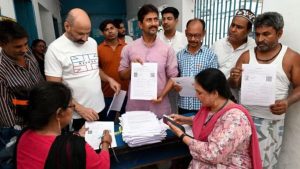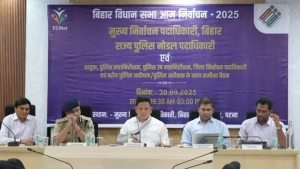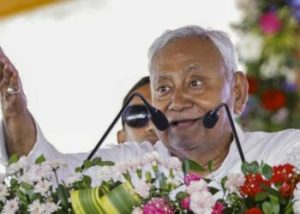Bihar Election 2025 Date Live: Will Voting Be in Two Phases and Will Government Form by November 15?
The political atmosphere in Bihar is buzzing with anticipation as the Election Commission of India (ECI) prepares to announce the schedule for the much-awaited 2025 Assembly elections. With the tenure of the current Legislative Assembly set to end on November 22, the commission has the responsibility of ensuring that voting, counting and government formation are completed well before the deadline. The big question on everyone’s mind is whether the election will take place in one phase or two, and how quickly a new government can be in place.
The race against time
By constitutional mandate, the new assembly must be formed before the existing one expires. This creates a strict timeline, giving the ECI only a few weeks to conduct a free and fair election. Given the state’s size and complexity, as well as the importance of smooth governance, the pressure to finish the process before November 15 is mounting. Political parties, civil society groups and common citizens alike are eagerly waiting for clarity on how the timeline will be managed.
Why the number of phases matters
Bihar is no stranger to multi-phase elections. In 2020, polling was held in three separate rounds across the state. This time, however, there is a growing demand to simplify the process. A one-phase election would minimize disruption, reduce costs and allow voters, especially those who migrate for work, to participate more easily. On the other hand, a two-phase election could give the administration more time to manage logistics, security and crowd control without stretching the process too long.
Most observers believe that a two-phase model strikes the right balance between efficiency and practicality. It would allow adequate deployment of security forces and officials while ensuring that the new government is in place in time.
Preparations on the ground
In recent weeks, the Election Commission has been actively reviewing arrangements in Bihar. Meetings with state officials, security agencies and political parties have focused on readiness and trust-building. The commission has also introduced a series of reforms to make this election smoother, more transparent and more accessible to ordinary voters.
Some of these reforms include reducing the number of voters assigned to each polling booth to prevent overcrowding, increasing the use of technology such as webcasting for better monitoring, and making voter rolls more accurate after a major revision drive. Small but important changes, like including candidates’ color photographs on electronic voting machines, are designed to help voters identify their choices easily. The commission has also announced improved compensation and recognition for polling staff, which is expected to boost morale and efficiency on voting days.
Why timing is critical
The deadline of November 15 is not just a bureaucratic target. It carries political and symbolic importance as well. Bihar, like much of India, has major festivals in October and early November. Conducting polls too close to these dates risks low voter turnout and logistical bottlenecks. On the other hand, delaying too long risks running into the end of the assembly’s term, which could create unnecessary instability.
By aiming for a mid-November completion, the Election Commission hopes to give the state a clear path forward, avoiding any governance vacuum. It also reassures citizens that their democratic rights will be exercised in a timely fashion without clashes with cultural or seasonal demands.
What comes next
Although the exact dates are still awaited, the picture is becoming clearer. If the commission goes ahead with two phases, polling is likely to be scheduled soon after the festival season. Counting would follow swiftly, allowing enough time for a government to be sworn in by November 15. A single-phase election, though harder to manage, would make this timeline even tighter and could be considered if security and administrative factors align perfectly.

For the people of Bihar, the election is more than just a routine exercise. It is a chance to decide the state’s direction at a time when development, jobs, education and social harmony remain top priorities. The mood on the ground is a mix of impatience and hope — impatience for clear answers on dates and phases, and hope that the process will be fair, efficient and inclusive.
As the official announcement approaches, Bihar stands at a crucial juncture. The Election Commission’s plan will not only set the stage for voting but will also reflect how India’s democracy adapts to the pressures of scale, diversity and tight deadlines. Whether in one phase or two, what matters most is that by mid-November, Bihar will have a new government ready to take on the challenges ahead.
Also read: https://channel6network.com/cuttack-erupts-in-violence-36-hour-curfew/

